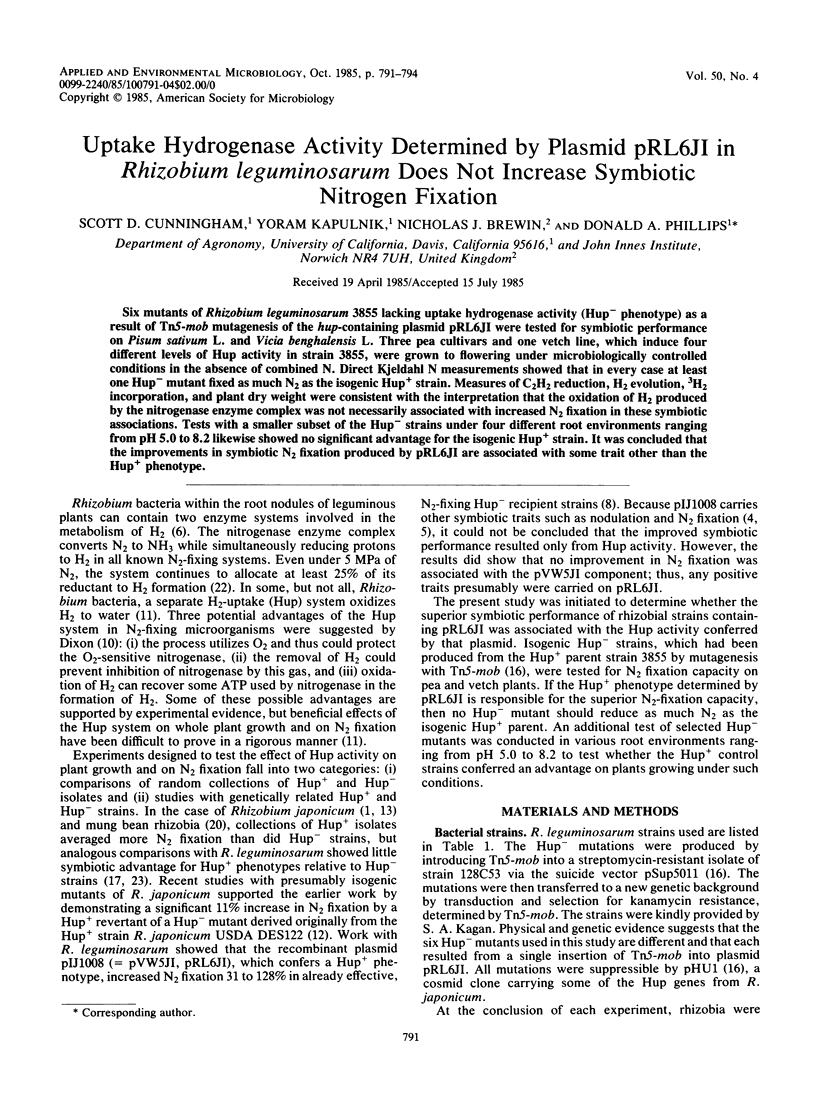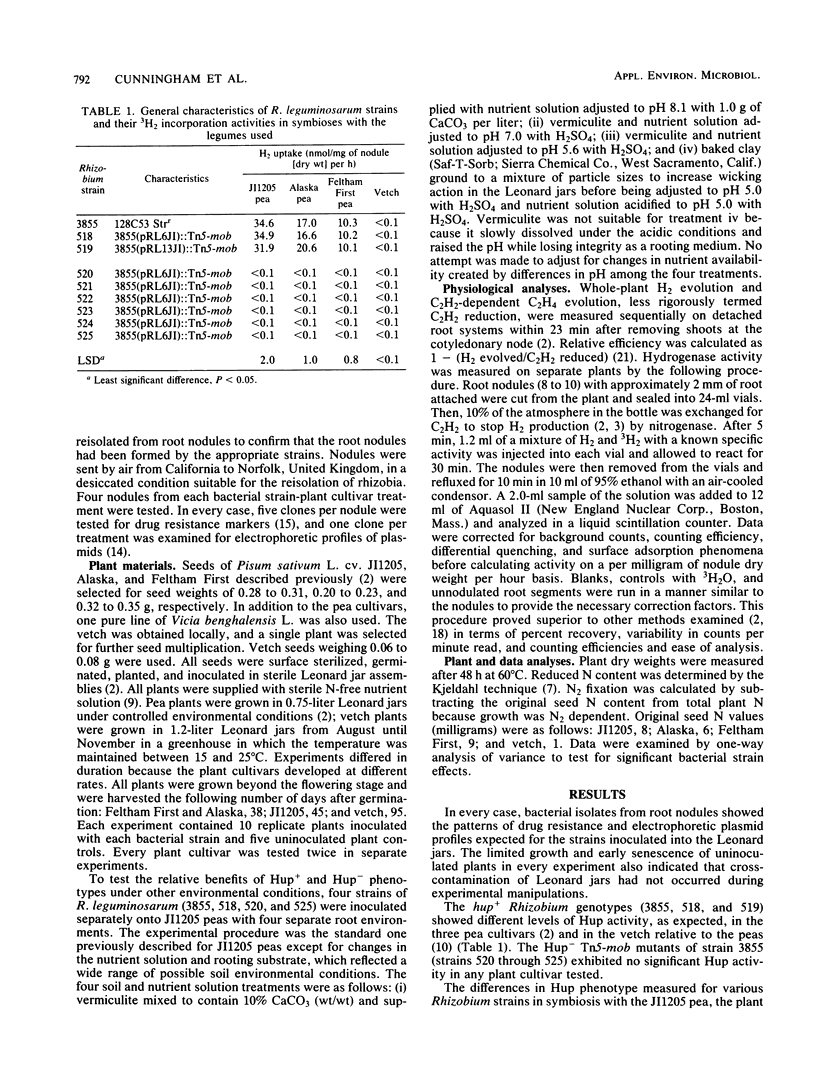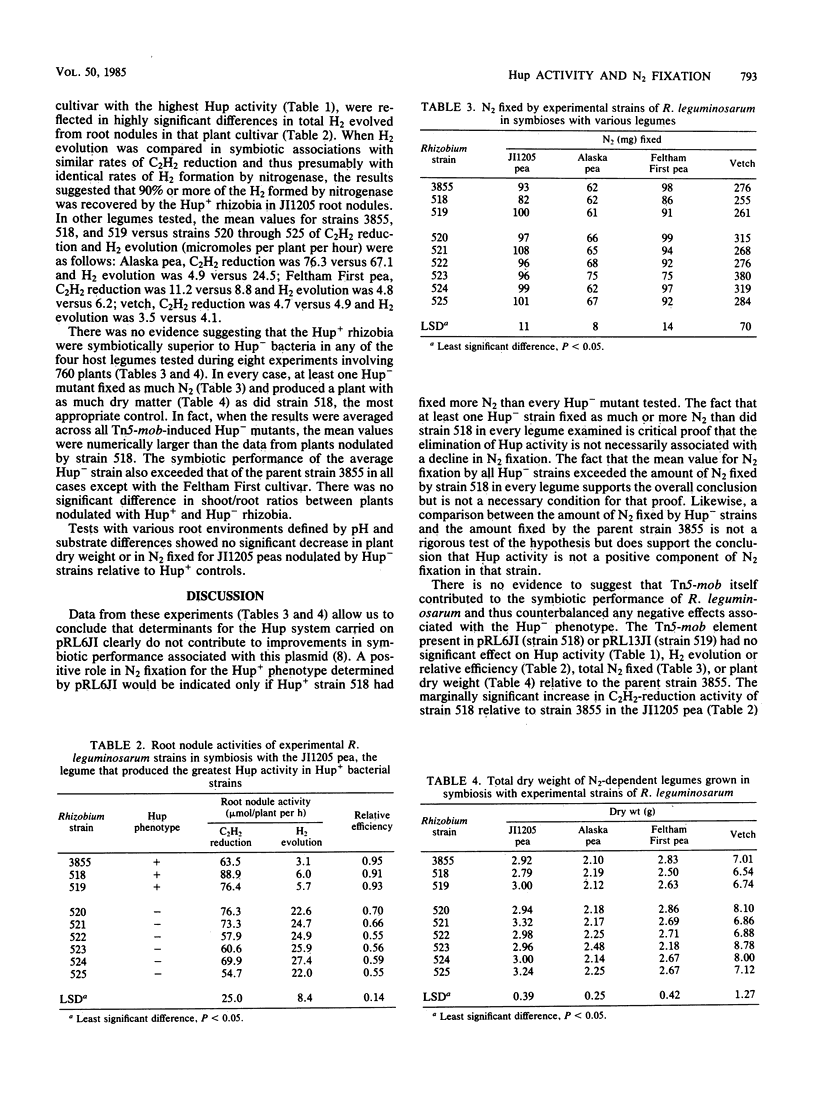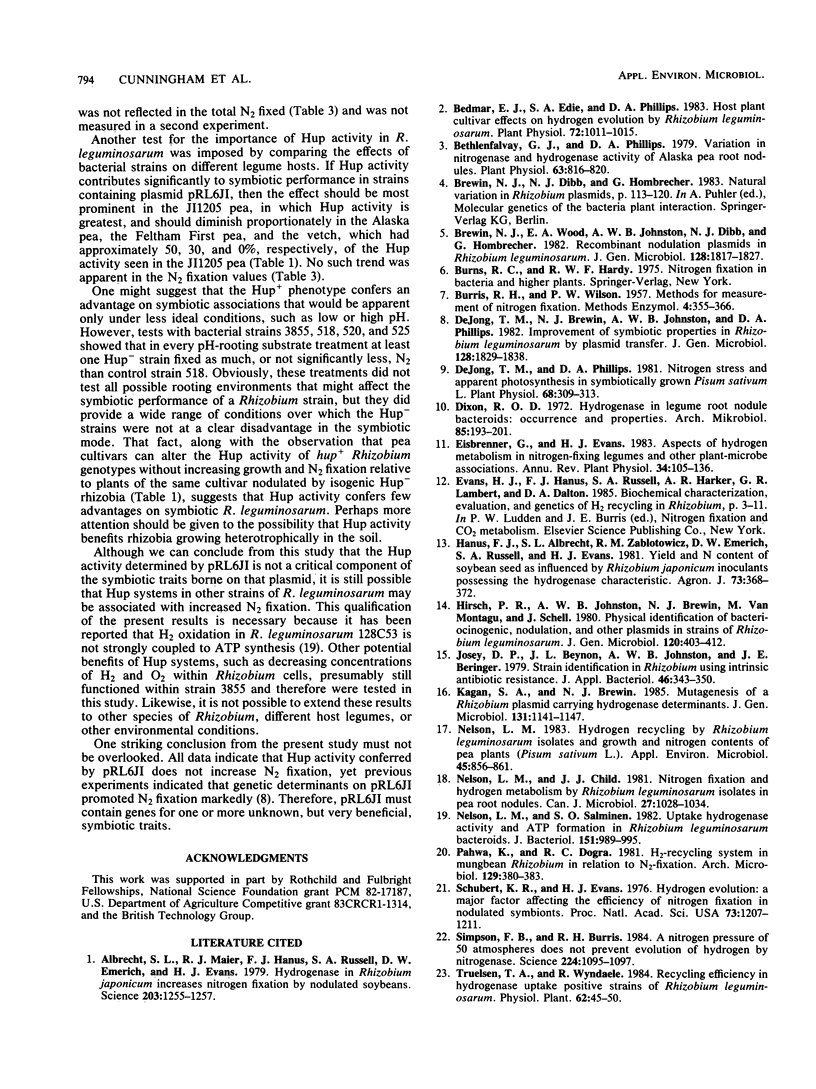Abstract
Six mutants of Rhizobium leguminosarum 3855 lacking uptake hydrogenase activity (Hup− phenotype) as a result of Tn5-mob mutagenesis of the hup-containing plasmid pRL6JI were tested for symbiotic performance on Pisum sativum L. and Vicia benghalensis L. Three pea cultivars and one vetch line, which induce four different levels of Hup activity in strain 3855, were grown to flowering under microbiologically controlled conditions in the absence of combined N. Direct Kjeldahl N measurements showed that in every case at least one Hup− mutant fixed as much N2 as the isogenic Hup+ strain. Measures of C2H2 reduction, H2 evolution, 3H2 incorporation, and plant dry weight were consistent with the interpretation that the oxidation of H2 produced by the nitrogenase enzyme complex was not necessarily associated with increased N2 fixation in these symbiotic associations. Tests with a smaller subset of the Hup− strains under four different root environments ranging from pH 5.0 to 8.2 likewise showed no significant advantage for the isogenic Hup+ strain. It was concluded that the improvements in symbiotic N2 fixation produced by pRL6JI are associated with some trait other than the Hup+ phenotype.
Full text
PDF



Selected References
These references are in PubMed. This may not be the complete list of references from this article.
- Albrecht S. L., Maier R. J., Hanus F. J., Russell S. A., Emerich D. W., Evans H. J. Hydrogenase in Rhizobium japonicum Increases Nitrogen Fixation by Nodulated Soybeans. Science. 1979 Mar 23;203(4386):1255–1257. doi: 10.1126/science.203.4386.1255. [DOI] [PubMed] [Google Scholar]
- Bedmar E. J., Edie S. A., Phillips D. A. Host Plant Cultivar Effects on Hydrogen Evolution by Rhizobium leguminosarum. Plant Physiol. 1983 Aug;72(4):1011–1015. doi: 10.1104/pp.72.4.1011. [DOI] [PMC free article] [PubMed] [Google Scholar]
- Bethlenfalvay G. J., Phillips D. A. Variation in nitrogenase and hydrogenase activity of alaska pea root nodules. Plant Physiol. 1979 May;63(5):816–820. doi: 10.1104/pp.63.5.816. [DOI] [PMC free article] [PubMed] [Google Scholar]
- Dejong T. M., Phillips D. A. Nitrogen Stress and Apparent Photosynthesis in Symbiotically Grown Pisum sativum L. Plant Physiol. 1981 Aug;68(2):309–313. doi: 10.1104/pp.68.2.309. [DOI] [PMC free article] [PubMed] [Google Scholar]
- Dixon R. O. Hydrogenase in legume root nodule bacteroids: occurrence and properties. Arch Mikrobiol. 1972;85(3):193–201. doi: 10.1007/BF00408844. [DOI] [PubMed] [Google Scholar]
- Nelson L. M. Hydrogen Recycling by Rhizobium leguminosarum Isolates and Growth and Nitrogen Contents of Pea Plants (Pisum sativum L.). Appl Environ Microbiol. 1983 Mar;45(3):856–861. doi: 10.1128/aem.45.3.856-861.1983. [DOI] [PMC free article] [PubMed] [Google Scholar]
- Nelson L. M., Salminen S. O. Uptake hydrogenase activity and ATP formation in Rhizobium leguminosarum bacteroids. J Bacteriol. 1982 Aug;151(2):989–995. doi: 10.1128/jb.151.2.989-995.1982. [DOI] [PMC free article] [PubMed] [Google Scholar]
- Schubert K. R., Evans H. J. Hydrogen evolution: A major factor affecting the efficiency of nitrogen fixation in nodulated symbionts. Proc Natl Acad Sci U S A. 1976 Apr;73(4):1207–1211. doi: 10.1073/pnas.73.4.1207. [DOI] [PMC free article] [PubMed] [Google Scholar]
- Simpson F. B., Burris R. H. A nitrogen pressure of 50 atmospheres does not prevent evolution of hydrogen by nitrogenase. Science. 1984 Jun 8;224(4653):1095–1097. doi: 10.1126/science.6585956. [DOI] [PubMed] [Google Scholar]


